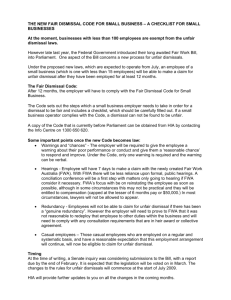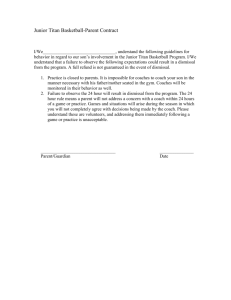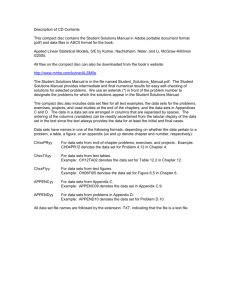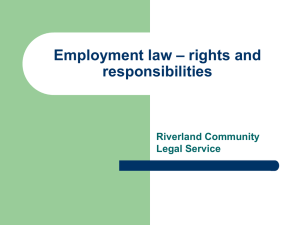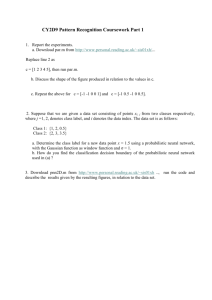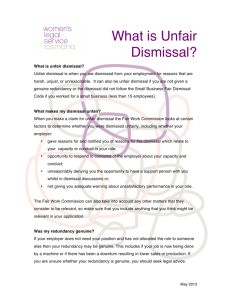Definitions: What we mean when we say “economic security”
advertisement
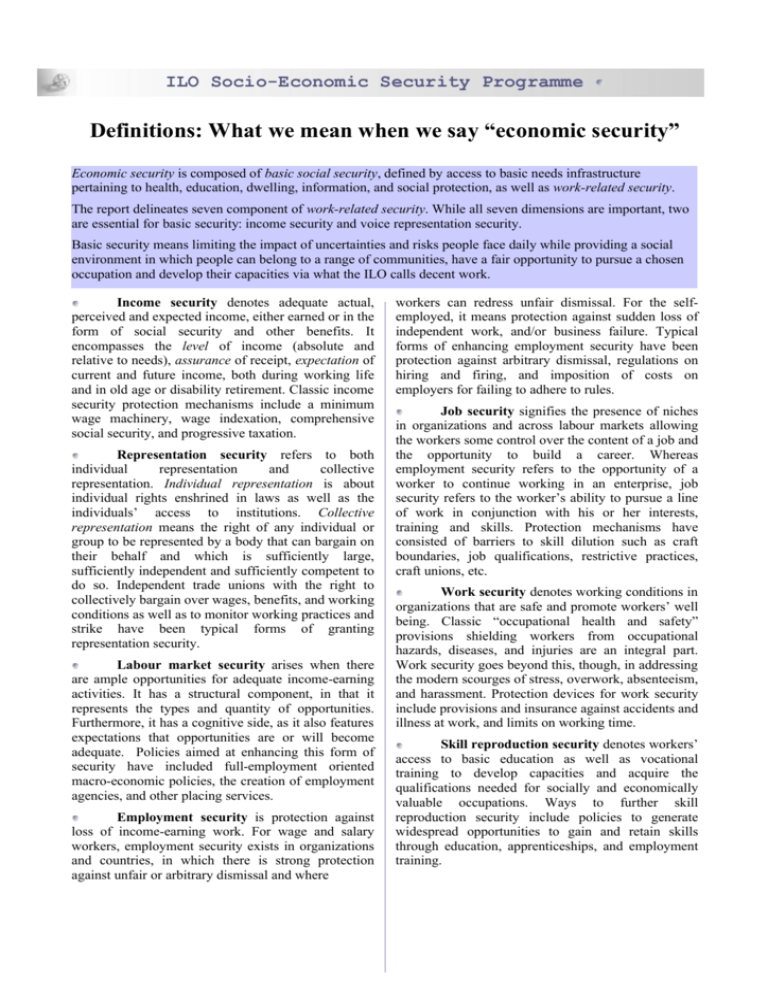
ILO Socio-Economic Security Programme Definitions: What we mean when we say “economic security” Economic security is composed of basic social security, defined by access to basic needs infrastructure pertaining to health, education, dwelling, information, and social protection, as well as work-related security. The report delineates seven component of work-related security. While all seven dimensions are important, two are essential for basic security: income security and voice representation security. Basic security means limiting the impact of uncertainties and risks people face daily while providing a social environment in which people can belong to a range of communities, have a fair opportunity to pursue a chosen occupation and develop their capacities via what the ILO calls decent work. Income security denotes adequate actual, perceived and expected income, either earned or in the form of social security and other benefits. It encompasses the level of income (absolute and relative to needs), assurance of receipt, expectation of current and future income, both during working life and in old age or disability retirement. Classic income security protection mechanisms include a minimum wage machinery, wage indexation, comprehensive social security, and progressive taxation. Representation security refers to both individual representation and collective representation. Individual representation is about individual rights enshrined in laws as well as the individuals’ access to institutions. Collective representation means the right of any individual or group to be represented by a body that can bargain on their behalf and which is sufficiently large, sufficiently independent and sufficiently competent to do so. Independent trade unions with the right to collectively bargain over wages, benefits, and working conditions as well as to monitor working practices and strike have been typical forms of granting representation security. Labour market security arises when there are ample opportunities for adequate income-earning activities. It has a structural component, in that it represents the types and quantity of opportunities. Furthermore, it has a cognitive side, as it also features expectations that opportunities are or will become adequate. Policies aimed at enhancing this form of security have included full-employment oriented macro-economic policies, the creation of employment agencies, and other placing services. Employment security is protection against loss of income-earning work. For wage and salary workers, employment security exists in organizations and countries, in which there is strong protection against unfair or arbitrary dismissal and where workers can redress unfair dismissal. For the selfemployed, it means protection against sudden loss of independent work, and/or business failure. Typical forms of enhancing employment security have been protection against arbitrary dismissal, regulations on hiring and firing, and imposition of costs on employers for failing to adhere to rules. Job security signifies the presence of niches in organizations and across labour markets allowing the workers some control over the content of a job and the opportunity to build a career. Whereas employment security refers to the opportunity of a worker to continue working in an enterprise, job security refers to the worker’s ability to pursue a line of work in conjunction with his or her interests, training and skills. Protection mechanisms have consisted of barriers to skill dilution such as craft boundaries, job qualifications, restrictive practices, craft unions, etc. Work security denotes working conditions in organizations that are safe and promote workers’ well being. Classic “occupational health and safety” provisions shielding workers from occupational hazards, diseases, and injuries are an integral part. Work security goes beyond this, though, in addressing the modern scourges of stress, overwork, absenteeism, and harassment. Protection devices for work security include provisions and insurance against accidents and illness at work, and limits on working time. Skill reproduction security denotes workers’ access to basic education as well as vocational training to develop capacities and acquire the qualifications needed for socially and economically valuable occupations. Ways to further skill reproduction security include policies to generate widespread opportunities to gain and retain skills through education, apprenticeships, and employment training.


